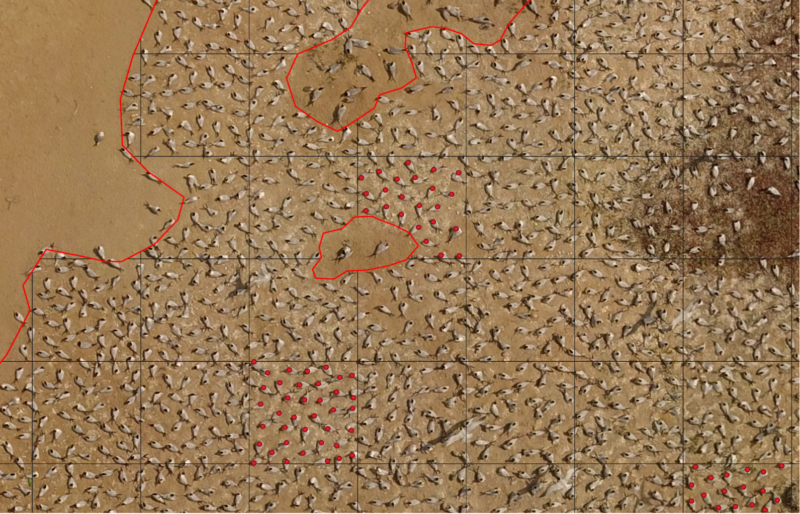Monitoring and managing and breeding seabirds
Large numbers of seabirds occur in the Sahelian Upwelling Marine Ecoregion along the coast of West Africa. The upwelling of nutrient-rich waters fuels the biological productivity of the system, which provides high food abundance for the seabirds. Suitable breeding sites are limited and only few sites are known to regularly hold significant numbers of breeding seabirds.
Reliable population estimates are essential to identify possible threats and organize effective protection. Since 2015, in collaboration with BirdLife International, Ecospace has carried out population censuses in the region, given field and theoretical training to local students and rangers and provided management advice.
Monitoring breeding seabirds
We have developed workflows and best practices for mapping breeding colonies using drones which provides highly accurate estimates of population size. An additional benefit of using drones for mapping colonies is that the images can be used to construct 3D models of the breeding islands.
Via the Microsoft AI for Earth program we have developed a model and analysis workflow based on convolutional neural networks to automate detection and species identification.
We always work closely with local park managers and conservationists who support our field work. During our missions we have trained field technicians how to safely operate drones without causing disturbance to breeding birds. We have also provided data management and post-processing of imagery. In addition to field training we have taught GIS, population analysis and organized workshops with stakeholders and developed management plans.




